Subscribe to the podcast to download all lesson audios for free.
 Sure the daily specials are good too, but it is hard to beat the usual, which in today’s lesson is a cheese bacon burger with fries and a soft drink. Learn about how to invite your friends to try something new to eat.
Sure the daily specials are good too, but it is hard to beat the usual, which in today’s lesson is a cheese bacon burger with fries and a soft drink. Learn about how to invite your friends to try something new to eat.
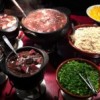 In today’s lesson we learn how to talk about one of the most characteristic foods of Brazil, feijoada. Think of a black bean stew with lots of different meats and the serve that over rice. You’ve got it, and for meat lovers, it is hard to resist.
In today’s lesson we learn how to talk about one of the most characteristic foods of Brazil, feijoada. Think of a black bean stew with lots of different meats and the serve that over rice. You’ve got it, and for meat lovers, it is hard to resist.
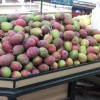 One of life’s most satisfying pleasures is to spend time at open outdoor markets, the feiras, as Brazilians call them. The sellers are amazing. They know exactly when the fruit will be ripe and they can help you choose the best one available. There’s also an art to how to settle on a price. In today’s lesson, we learn how to buy some mangos, one of the classic fruit treats that are found at feiras.
One of life’s most satisfying pleasures is to spend time at open outdoor markets, the feiras, as Brazilians call them. The sellers are amazing. They know exactly when the fruit will be ripe and they can help you choose the best one available. There’s also an art to how to settle on a price. In today’s lesson, we learn how to buy some mangos, one of the classic fruit treats that are found at feiras.
 We hate to say it, but unfortunately things are more expensive. That’s just the way it’s going to be. At least in this lesson we can moan and groan about it a little bit in Portuguese.
We hate to say it, but unfortunately things are more expensive. That’s just the way it’s going to be. At least in this lesson we can moan and groan about it a little bit in Portuguese.
 If you are inviting me to eat moqueca, you don’t need to invite me to twice. I’ll wash up and take a seat. And if you haven’t tried moqueca, at least this lesson gives you the vocabulary and grammar to talk about it.
If you are inviting me to eat moqueca, you don’t need to invite me to twice. I’ll wash up and take a seat. And if you haven’t tried moqueca, at least this lesson gives you the vocabulary and grammar to talk about it.
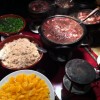 Sometimes we never get tired of our favorite restaurants. In today’s lesson we learn how to suggest that we go back to our favorite once again. And, by the way, we do agree that comida mineira is excellent food!
Sometimes we never get tired of our favorite restaurants. In today’s lesson we learn how to suggest that we go back to our favorite once again. And, by the way, we do agree that comida mineira is excellent food!
 Some things are just difficult to translate, and the names of different Brazilian desserts definitely fall in that category. Truth told, tasting them is the only way to really know what we are talking about. Taste truly trumps translation. Still, after this lesson you will know a number of Brazilian desserts that you should at least try to taste sometime.
Some things are just difficult to translate, and the names of different Brazilian desserts definitely fall in that category. Truth told, tasting them is the only way to really know what we are talking about. Taste truly trumps translation. Still, after this lesson you will know a number of Brazilian desserts that you should at least try to taste sometime.
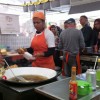 What could it hurt, a little fried food for lunch, no big deal, right? If it means that you get to eat quibe, esfirra, coxinha and pastelzinhos, perhaps the extra calories are worth it. But then again, too much of a good thing might add on the extra pounds. After today’s lesson, you will be able to either order more fried foods or avoid more fried foods!
What could it hurt, a little fried food for lunch, no big deal, right? If it means that you get to eat quibe, esfirra, coxinha and pastelzinhos, perhaps the extra calories are worth it. But then again, too much of a good thing might add on the extra pounds. After today’s lesson, you will be able to either order more fried foods or avoid more fried foods!
 We’ve all heard about the wonders of the açaí berry: antioxidants, fiber, low in fat, super energy, etc. Whether that is true or not, there are those who just love the taste of açaí smoothies. Others, however, just can’t get used to the unique taste. After this lesson, if you haven’t every tried açaí, you’ll wonder which side of the debate you will be on.
We’ve all heard about the wonders of the açaí berry: antioxidants, fiber, low in fat, super energy, etc. Whether that is true or not, there are those who just love the taste of açaí smoothies. Others, however, just can’t get used to the unique taste. After this lesson, if you haven’t every tried açaí, you’ll wonder which side of the debate you will be on.
 Brazilian churrasco (barbecue) is world famous, especially among the beef lovers of the world. Probably two of the major features include the use of sea salt in the flavoring and the unique cuts of meat, including the well-known picanha. In today’s lesson however, we find out that picanha isn’t everyone’s favorite cut of meat.
Brazilian churrasco (barbecue) is world famous, especially among the beef lovers of the world. Probably two of the major features include the use of sea salt in the flavoring and the unique cuts of meat, including the well-known picanha. In today’s lesson however, we find out that picanha isn’t everyone’s favorite cut of meat.
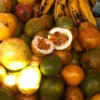 The fruit juices in Brazil are fantastic. Really, our recommendation is that among the first things you ever do in Brazil is to try the different fruit juices. There are hundreds of tropical fruits and many make excellent juices. This lesson will get you started, and you will also learn the Portuguese necessary to experience new flavors.
The fruit juices in Brazil are fantastic. Really, our recommendation is that among the first things you ever do in Brazil is to try the different fruit juices. There are hundreds of tropical fruits and many make excellent juices. This lesson will get you started, and you will also learn the Portuguese necessary to experience new flavors.
 It’s always nice to wake up in a hotel and head on down to a buffet breakfast. Especially in Brazil this means that you get lots of fresh fruit, juices, breads, cheeses, and something hot to drink. After today’s lesson you should be able to find out how to get to breakfast, and hopefully know what time it is served too.
It’s always nice to wake up in a hotel and head on down to a buffet breakfast. Especially in Brazil this means that you get lots of fresh fruit, juices, breads, cheeses, and something hot to drink. After today’s lesson you should be able to find out how to get to breakfast, and hopefully know what time it is served too.
 No doubt, our lessons are about Portuguese, but how can somebody resist good Italian food? And where do you find some of the world’s best Italian food? In São Paulo, Brazil of course. Enjoy a large serving of lasagna and enjoy the lesson about food.
No doubt, our lessons are about Portuguese, but how can somebody resist good Italian food? And where do you find some of the world’s best Italian food? In São Paulo, Brazil of course. Enjoy a large serving of lasagna and enjoy the lesson about food.
 Don’t you hate it when you run out of milk! How can one be expected to eat cereal for breakfast when there is no milk. Oops, let’s take that back. Brazilians don’t eat cold cereal for breakfast. Still, if someone is going to the store, let’s learn how to ask them to pick up some milk.
Don’t you hate it when you run out of milk! How can one be expected to eat cereal for breakfast when there is no milk. Oops, let’s take that back. Brazilians don’t eat cold cereal for breakfast. Still, if someone is going to the store, let’s learn how to ask them to pick up some milk.
 Wow, that garbage can is starting to smell bad. Either we learn some Portuguese to talk about taking the trash out, or we take out the trash ourselves. Either way, this lesson has got to help us clear the air a bit.
Wow, that garbage can is starting to smell bad. Either we learn some Portuguese to talk about taking the trash out, or we take out the trash ourselves. Either way, this lesson has got to help us clear the air a bit.
 Feiras or markets, what a fantastic way to enjoy a couple of hours, do some excellent shopping, and also hear tons of everyday language. Remember to taste the foods, just see verify the ones that you really want to buy. In today’s lesson the seller has some good bananas, but the buyer is also looking for some tangerines. Enjoy!
Feiras or markets, what a fantastic way to enjoy a couple of hours, do some excellent shopping, and also hear tons of everyday language. Remember to taste the foods, just see verify the ones that you really want to buy. In today’s lesson the seller has some good bananas, but the buyer is also looking for some tangerines. Enjoy!
 Out of all the appliances that one might need in the kitchen, for many the microwave oven is the most used. Cooking, what do you mean cooking? We just heat things up, right? No matter how you use the microwave, in today’s lesson we learn to talk about it in Portuguese.
Out of all the appliances that one might need in the kitchen, for many the microwave oven is the most used. Cooking, what do you mean cooking? We just heat things up, right? No matter how you use the microwave, in today’s lesson we learn to talk about it in Portuguese.
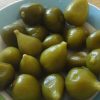 Lots of us have great memories of watching grandma making jams and preserves. Picking the fruits, adding the sugar, putting it in jars, ahh the good old days with granny. In today’s lesson we reminisce about all of this and how great it was to have grandma around!
Lots of us have great memories of watching grandma making jams and preserves. Picking the fruits, adding the sugar, putting it in jars, ahh the good old days with granny. In today’s lesson we reminisce about all of this and how great it was to have grandma around!
 It’s OK to experiment with new recipes, but sometimes it’s better not to mess with a good thing. In today’s lesson we find out that the old soup recipe was just fine. Leave well enough alone. Well, nothing ventured, nothing gained. And in this case we all gain in learning some more Portuguese.
It’s OK to experiment with new recipes, but sometimes it’s better not to mess with a good thing. In today’s lesson we find out that the old soup recipe was just fine. Leave well enough alone. Well, nothing ventured, nothing gained. And in this case we all gain in learning some more Portuguese.
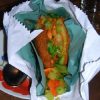 Bahia, if food doesn’t come to mind as the very first thing, chances are that it’s the still one of the top associations. Vatapá, caruru, moqueca, it just seems that the never-ending list of great foods just sparkle with a Bahia shine. In today’s lesson we focus on the food that perhaps most we most associate with Bahia: Acarajé. Listen to Andreia and Antonio tell us how acarajé is made.
Bahia, if food doesn’t come to mind as the very first thing, chances are that it’s the still one of the top associations. Vatapá, caruru, moqueca, it just seems that the never-ending list of great foods just sparkle with a Bahia shine. In today’s lesson we focus on the food that perhaps most we most associate with Bahia: Acarajé. Listen to Andreia and Antonio tell us how acarajé is made.
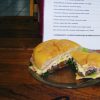 Forget the famous food chains, if you want a burger in Brazil, check out the guy with the corner stand. Brazilian X-tudo comes with all the extras, and when we day “tudo” we mean everything. Bring it on, and bring on a lesson to talk about it in Portuguese.
Forget the famous food chains, if you want a burger in Brazil, check out the guy with the corner stand. Brazilian X-tudo comes with all the extras, and when we day “tudo” we mean everything. Bring it on, and bring on a lesson to talk about it in Portuguese.
 Ice cream is already one of life’s great pleasures, and this is even more the case in a place where tropical fruits give us even more new flavor options. So let’s talk about ice cream, your favorite flavors, your favorite places to buy it, and who to share it with.
Ice cream is already one of life’s great pleasures, and this is even more the case in a place where tropical fruits give us even more new flavor options. So let’s talk about ice cream, your favorite flavors, your favorite places to buy it, and who to share it with.
 What a play on words, a restaurant called “São Duíche”! We’ve got São Paulo, São Jorge, São Caetano, we might as well add a São Duíche, the patron saint of those who love “sanduíches” or sandwiches. This is going to be a fun Portuguese language lesson!
What a play on words, a restaurant called “São Duíche”! We’ve got São Paulo, São Jorge, São Caetano, we might as well add a São Duíche, the patron saint of those who love “sanduíches” or sandwiches. This is going to be a fun Portuguese language lesson!
 It’s one thing to eat sweets and candies, it’s another to make homemade sweets. For Brazilians, this begins with brigadeiro, which can be simple or elegant. We wish that we could promise that anyone who learns how to speak Portuguese will automatically know how to make brigadeiros. Truth told, however, all we can say is that you’ll know how to order them!
It’s one thing to eat sweets and candies, it’s another to make homemade sweets. For Brazilians, this begins with brigadeiro, which can be simple or elegant. We wish that we could promise that anyone who learns how to speak Portuguese will automatically know how to make brigadeiros. Truth told, however, all we can say is that you’ll know how to order them!
 Among the Portuguese skills that we all need, ordering a quick snack and a drink rank high on the list. Potentially you will need this skill on a daily basis. We’ve got you covered and in this lesson we make sure you won’t starve to death while in Brazil!
Among the Portuguese skills that we all need, ordering a quick snack and a drink rank high on the list. Potentially you will need this skill on a daily basis. We’ve got you covered and in this lesson we make sure you won’t starve to death while in Brazil!
 Nestlé, Garoto or Lacta, in Brazil the question is which chocolate brand we like the most. After today’s lesson, even if you can’t decide, you can at least explain the argument to defend one brand over another.
Nestlé, Garoto or Lacta, in Brazil the question is which chocolate brand we like the most. After today’s lesson, even if you can’t decide, you can at least explain the argument to defend one brand over another.
 Salgadinhos, those salty snack foods that we all love to eat, even if do so with a little sense of guilt, knowing that they just can’t be all that healthy of an option. Still, in today’s lesson we give you a pretty good list of many of the salgadinhos that you should try. And, as long as you don’t go too crazy, feel free to eat them without feely guilty.
Salgadinhos, those salty snack foods that we all love to eat, even if do so with a little sense of guilt, knowing that they just can’t be all that healthy of an option. Still, in today’s lesson we give you a pretty good list of many of the salgadinhos that you should try. And, as long as you don’t go too crazy, feel free to eat them without feely guilty.
 How in the world does a person figure out what makes a good cachaça? Color, smell, taste, and what brands are recommended? This lesson is our chance to get you started in knowing how to talk about cachaça and caipirinha.Drinking it, well, we’ll leave that up to you.
How in the world does a person figure out what makes a good cachaça? Color, smell, taste, and what brands are recommended? This lesson is our chance to get you started in knowing how to talk about cachaça and caipirinha.Drinking it, well, we’ll leave that up to you.
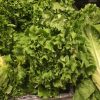 It’s one thing to think of salad as a fresh, healthy food. But we’ve all had the experience of opening the fridge, only to find that the lettuce is brown, the tomatoes are old, and the cucumbers are mushy. It’s enough to take away your appetite. It doesn’t matter what language you are using, that kind of food is gross.
It’s one thing to think of salad as a fresh, healthy food. But we’ve all had the experience of opening the fridge, only to find that the lettuce is brown, the tomatoes are old, and the cucumbers are mushy. It’s enough to take away your appetite. It doesn’t matter what language you are using, that kind of food is gross.
 Have you ever been to one of those restaurants where you pay by weight. They are extremely popular in Brazil. However, the question in today’s lesson is whether or not is makes sense to pay for food by weight. Some think it’s convenient and logical, others find it inconvenient and illogical. Either way, we learn some great Portuguese verbs to talk about the self-service restaurants.
Have you ever been to one of those restaurants where you pay by weight. They are extremely popular in Brazil. However, the question in today’s lesson is whether or not is makes sense to pay for food by weight. Some think it’s convenient and logical, others find it inconvenient and illogical. Either way, we learn some great Portuguese verbs to talk about the self-service restaurants.
 Sure the daily specials are good too, but it is hard to beat the usual, which in today’s lesson is a cheese bacon burger with fries and a soft drink. Learn about how to invite your friends to try something new to eat.
Sure the daily specials are good too, but it is hard to beat the usual, which in today’s lesson is a cheese bacon burger with fries and a soft drink. Learn about how to invite your friends to try something new to eat.
 In today’s lesson we learn how to talk about one of the most characteristic foods of Brazil, feijoada. Think of a black bean stew with lots of different meats and the serve that over rice. You’ve got it, and for meat lovers, it is hard to resist.
In today’s lesson we learn how to talk about one of the most characteristic foods of Brazil, feijoada. Think of a black bean stew with lots of different meats and the serve that over rice. You’ve got it, and for meat lovers, it is hard to resist.
 One of life’s most satisfying pleasures is to spend time at open outdoor markets, the feiras, as Brazilians call them. The sellers are amazing. They know exactly when the fruit will be ripe and they can help you choose the best one available. There’s also an art to how to settle on a price. In today’s lesson, we learn how to buy some mangos, one of the classic fruit treats that are found at feiras.
One of life’s most satisfying pleasures is to spend time at open outdoor markets, the feiras, as Brazilians call them. The sellers are amazing. They know exactly when the fruit will be ripe and they can help you choose the best one available. There’s also an art to how to settle on a price. In today’s lesson, we learn how to buy some mangos, one of the classic fruit treats that are found at feiras.
 We hate to say it, but unfortunately things are more expensive. That’s just the way it’s going to be. At least in this lesson we can moan and groan about it a little bit in Portuguese.
We hate to say it, but unfortunately things are more expensive. That’s just the way it’s going to be. At least in this lesson we can moan and groan about it a little bit in Portuguese.
 If you are inviting me to eat moqueca, you don’t need to invite me to twice. I’ll wash up and take a seat. And if you haven’t tried moqueca, at least this lesson gives you the vocabulary and grammar to talk about it.
If you are inviting me to eat moqueca, you don’t need to invite me to twice. I’ll wash up and take a seat. And if you haven’t tried moqueca, at least this lesson gives you the vocabulary and grammar to talk about it.
 Sometimes we never get tired of our favorite restaurants. In today’s lesson we learn how to suggest that we go back to our favorite once again. And, by the way, we do agree that comida mineira is excellent food!
Sometimes we never get tired of our favorite restaurants. In today’s lesson we learn how to suggest that we go back to our favorite once again. And, by the way, we do agree that comida mineira is excellent food!
 Some things are just difficult to translate, and the names of different Brazilian desserts definitely fall in that category. Truth told, tasting them is the only way to really know what we are talking about. Taste truly trumps translation. Still, after this lesson you will know a number of Brazilian desserts that you should at least try to taste sometime.
Some things are just difficult to translate, and the names of different Brazilian desserts definitely fall in that category. Truth told, tasting them is the only way to really know what we are talking about. Taste truly trumps translation. Still, after this lesson you will know a number of Brazilian desserts that you should at least try to taste sometime.
 What could it hurt, a little fried food for lunch, no big deal, right? If it means that you get to eat quibe, esfirra, coxinha and pastelzinhos, perhaps the extra calories are worth it. But then again, too much of a good thing might add on the extra pounds. After today’s lesson, you will be able to either order more fried foods or avoid more fried foods!
What could it hurt, a little fried food for lunch, no big deal, right? If it means that you get to eat quibe, esfirra, coxinha and pastelzinhos, perhaps the extra calories are worth it. But then again, too much of a good thing might add on the extra pounds. After today’s lesson, you will be able to either order more fried foods or avoid more fried foods!
 We’ve all heard about the wonders of the açaí berry: antioxidants, fiber, low in fat, super energy, etc. Whether that is true or not, there are those who just love the taste of açaí smoothies. Others, however, just can’t get used to the unique taste. After this lesson, if you haven’t every tried açaí, you’ll wonder which side of the debate you will be on.
We’ve all heard about the wonders of the açaí berry: antioxidants, fiber, low in fat, super energy, etc. Whether that is true or not, there are those who just love the taste of açaí smoothies. Others, however, just can’t get used to the unique taste. After this lesson, if you haven’t every tried açaí, you’ll wonder which side of the debate you will be on.
 Brazilian churrasco (barbecue) is world famous, especially among the beef lovers of the world. Probably two of the major features include the use of sea salt in the flavoring and the unique cuts of meat, including the well-known picanha. In today’s lesson however, we find out that picanha isn’t everyone’s favorite cut of meat.
Brazilian churrasco (barbecue) is world famous, especially among the beef lovers of the world. Probably two of the major features include the use of sea salt in the flavoring and the unique cuts of meat, including the well-known picanha. In today’s lesson however, we find out that picanha isn’t everyone’s favorite cut of meat.
 The fruit juices in Brazil are fantastic. Really, our recommendation is that among the first things you ever do in Brazil is to try the different fruit juices. There are hundreds of tropical fruits and many make excellent juices. This lesson will get you started, and you will also learn the Portuguese necessary to experience new flavors.
The fruit juices in Brazil are fantastic. Really, our recommendation is that among the first things you ever do in Brazil is to try the different fruit juices. There are hundreds of tropical fruits and many make excellent juices. This lesson will get you started, and you will also learn the Portuguese necessary to experience new flavors.
 It’s always nice to wake up in a hotel and head on down to a buffet breakfast. Especially in Brazil this means that you get lots of fresh fruit, juices, breads, cheeses, and something hot to drink. After today’s lesson you should be able to find out how to get to breakfast, and hopefully know what time it is served too.
It’s always nice to wake up in a hotel and head on down to a buffet breakfast. Especially in Brazil this means that you get lots of fresh fruit, juices, breads, cheeses, and something hot to drink. After today’s lesson you should be able to find out how to get to breakfast, and hopefully know what time it is served too.
 No doubt, our lessons are about Portuguese, but how can somebody resist good Italian food? And where do you find some of the world’s best Italian food? In São Paulo, Brazil of course. Enjoy a large serving of lasagna and enjoy the lesson about food.
No doubt, our lessons are about Portuguese, but how can somebody resist good Italian food? And where do you find some of the world’s best Italian food? In São Paulo, Brazil of course. Enjoy a large serving of lasagna and enjoy the lesson about food.
 Don’t you hate it when you run out of milk! How can one be expected to eat cereal for breakfast when there is no milk. Oops, let’s take that back. Brazilians don’t eat cold cereal for breakfast. Still, if someone is going to the store, let’s learn how to ask them to pick up some milk.
Don’t you hate it when you run out of milk! How can one be expected to eat cereal for breakfast when there is no milk. Oops, let’s take that back. Brazilians don’t eat cold cereal for breakfast. Still, if someone is going to the store, let’s learn how to ask them to pick up some milk.
 Wow, that garbage can is starting to smell bad. Either we learn some Portuguese to talk about taking the trash out, or we take out the trash ourselves. Either way, this lesson has got to help us clear the air a bit.
Wow, that garbage can is starting to smell bad. Either we learn some Portuguese to talk about taking the trash out, or we take out the trash ourselves. Either way, this lesson has got to help us clear the air a bit.
 Feiras or markets, what a fantastic way to enjoy a couple of hours, do some excellent shopping, and also hear tons of everyday language. Remember to taste the foods, just see verify the ones that you really want to buy. In today’s lesson the seller has some good bananas, but the buyer is also looking for some tangerines. Enjoy!
Feiras or markets, what a fantastic way to enjoy a couple of hours, do some excellent shopping, and also hear tons of everyday language. Remember to taste the foods, just see verify the ones that you really want to buy. In today’s lesson the seller has some good bananas, but the buyer is also looking for some tangerines. Enjoy!
 Out of all the appliances that one might need in the kitchen, for many the microwave oven is the most used. Cooking, what do you mean cooking? We just heat things up, right? No matter how you use the microwave, in today’s lesson we learn to talk about it in Portuguese.
Out of all the appliances that one might need in the kitchen, for many the microwave oven is the most used. Cooking, what do you mean cooking? We just heat things up, right? No matter how you use the microwave, in today’s lesson we learn to talk about it in Portuguese.
 Lots of us have great memories of watching grandma making jams and preserves. Picking the fruits, adding the sugar, putting it in jars, ahh the good old days with granny. In today’s lesson we reminisce about all of this and how great it was to have grandma around!
Lots of us have great memories of watching grandma making jams and preserves. Picking the fruits, adding the sugar, putting it in jars, ahh the good old days with granny. In today’s lesson we reminisce about all of this and how great it was to have grandma around!
 It’s OK to experiment with new recipes, but sometimes it’s better not to mess with a good thing. In today’s lesson we find out that the old soup recipe was just fine. Leave well enough alone. Well, nothing ventured, nothing gained. And in this case we all gain in learning some more Portuguese.
It’s OK to experiment with new recipes, but sometimes it’s better not to mess with a good thing. In today’s lesson we find out that the old soup recipe was just fine. Leave well enough alone. Well, nothing ventured, nothing gained. And in this case we all gain in learning some more Portuguese.
 Bahia, if food doesn’t come to mind as the very first thing, chances are that it’s the still one of the top associations. Vatapá, caruru, moqueca, it just seems that the never-ending list of great foods just sparkle with a Bahia shine. In today’s lesson we focus on the food that perhaps most we most associate with Bahia: Acarajé. Listen to Andreia and Antonio tell us how acarajé is made.
Bahia, if food doesn’t come to mind as the very first thing, chances are that it’s the still one of the top associations. Vatapá, caruru, moqueca, it just seems that the never-ending list of great foods just sparkle with a Bahia shine. In today’s lesson we focus on the food that perhaps most we most associate with Bahia: Acarajé. Listen to Andreia and Antonio tell us how acarajé is made.
 Forget the famous food chains, if you want a burger in Brazil, check out the guy with the corner stand. Brazilian X-tudo comes with all the extras, and when we day “tudo” we mean everything. Bring it on, and bring on a lesson to talk about it in Portuguese.
Forget the famous food chains, if you want a burger in Brazil, check out the guy with the corner stand. Brazilian X-tudo comes with all the extras, and when we day “tudo” we mean everything. Bring it on, and bring on a lesson to talk about it in Portuguese.
 Ice cream is already one of life’s great pleasures, and this is even more the case in a place where tropical fruits give us even more new flavor options. So let’s talk about ice cream, your favorite flavors, your favorite places to buy it, and who to share it with.
Ice cream is already one of life’s great pleasures, and this is even more the case in a place where tropical fruits give us even more new flavor options. So let’s talk about ice cream, your favorite flavors, your favorite places to buy it, and who to share it with.
 What a play on words, a restaurant called “São Duíche”! We’ve got São Paulo, São Jorge, São Caetano, we might as well add a São Duíche, the patron saint of those who love “sanduíches” or sandwiches. This is going to be a fun Portuguese language lesson!
What a play on words, a restaurant called “São Duíche”! We’ve got São Paulo, São Jorge, São Caetano, we might as well add a São Duíche, the patron saint of those who love “sanduíches” or sandwiches. This is going to be a fun Portuguese language lesson!
 It’s one thing to eat sweets and candies, it’s another to make homemade sweets. For Brazilians, this begins with brigadeiro, which can be simple or elegant. We wish that we could promise that anyone who learns how to speak Portuguese will automatically know how to make brigadeiros. Truth told, however, all we can say is that you’ll know how to order them!
It’s one thing to eat sweets and candies, it’s another to make homemade sweets. For Brazilians, this begins with brigadeiro, which can be simple or elegant. We wish that we could promise that anyone who learns how to speak Portuguese will automatically know how to make brigadeiros. Truth told, however, all we can say is that you’ll know how to order them!
 Among the Portuguese skills that we all need, ordering a quick snack and a drink rank high on the list. Potentially you will need this skill on a daily basis. We’ve got you covered and in this lesson we make sure you won’t starve to death while in Brazil!
Among the Portuguese skills that we all need, ordering a quick snack and a drink rank high on the list. Potentially you will need this skill on a daily basis. We’ve got you covered and in this lesson we make sure you won’t starve to death while in Brazil!
 Nestlé, Garoto or Lacta, in Brazil the question is which chocolate brand we like the most. After today’s lesson, even if you can’t decide, you can at least explain the argument to defend one brand over another.
Nestlé, Garoto or Lacta, in Brazil the question is which chocolate brand we like the most. After today’s lesson, even if you can’t decide, you can at least explain the argument to defend one brand over another.
 Salgadinhos, those salty snack foods that we all love to eat, even if do so with a little sense of guilt, knowing that they just can’t be all that healthy of an option. Still, in today’s lesson we give you a pretty good list of many of the salgadinhos that you should try. And, as long as you don’t go too crazy, feel free to eat them without feely guilty.
Salgadinhos, those salty snack foods that we all love to eat, even if do so with a little sense of guilt, knowing that they just can’t be all that healthy of an option. Still, in today’s lesson we give you a pretty good list of many of the salgadinhos that you should try. And, as long as you don’t go too crazy, feel free to eat them without feely guilty.
 How in the world does a person figure out what makes a good cachaça? Color, smell, taste, and what brands are recommended? This lesson is our chance to get you started in knowing how to talk about cachaça and caipirinha.Drinking it, well, we’ll leave that up to you.
How in the world does a person figure out what makes a good cachaça? Color, smell, taste, and what brands are recommended? This lesson is our chance to get you started in knowing how to talk about cachaça and caipirinha.Drinking it, well, we’ll leave that up to you.
 It’s one thing to think of salad as a fresh, healthy food. But we’ve all had the experience of opening the fridge, only to find that the lettuce is brown, the tomatoes are old, and the cucumbers are mushy. It’s enough to take away your appetite. It doesn’t matter what language you are using, that kind of food is gross.
It’s one thing to think of salad as a fresh, healthy food. But we’ve all had the experience of opening the fridge, only to find that the lettuce is brown, the tomatoes are old, and the cucumbers are mushy. It’s enough to take away your appetite. It doesn’t matter what language you are using, that kind of food is gross.
 Have you ever been to one of those restaurants where you pay by weight. They are extremely popular in Brazil. However, the question in today’s lesson is whether or not is makes sense to pay for food by weight. Some think it’s convenient and logical, others find it inconvenient and illogical. Either way, we learn some great Portuguese verbs to talk about the self-service restaurants.
Have you ever been to one of those restaurants where you pay by weight. They are extremely popular in Brazil. However, the question in today’s lesson is whether or not is makes sense to pay for food by weight. Some think it’s convenient and logical, others find it inconvenient and illogical. Either way, we learn some great Portuguese verbs to talk about the self-service restaurants.